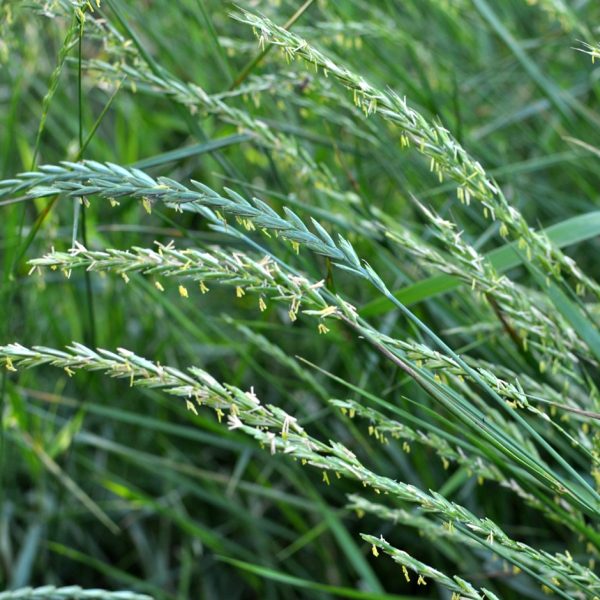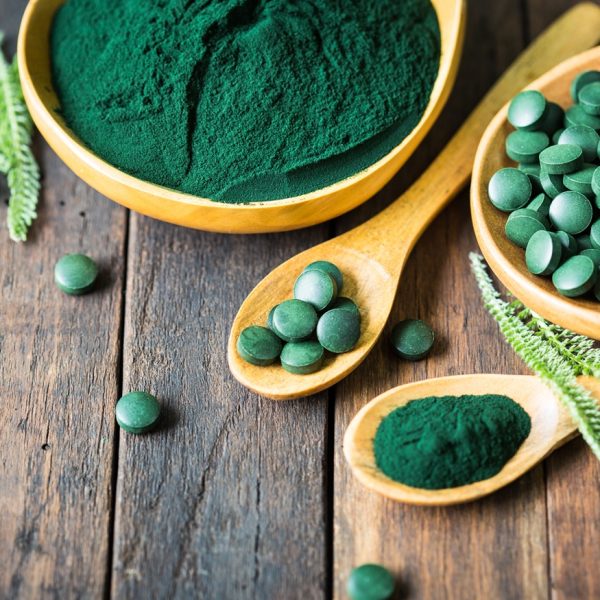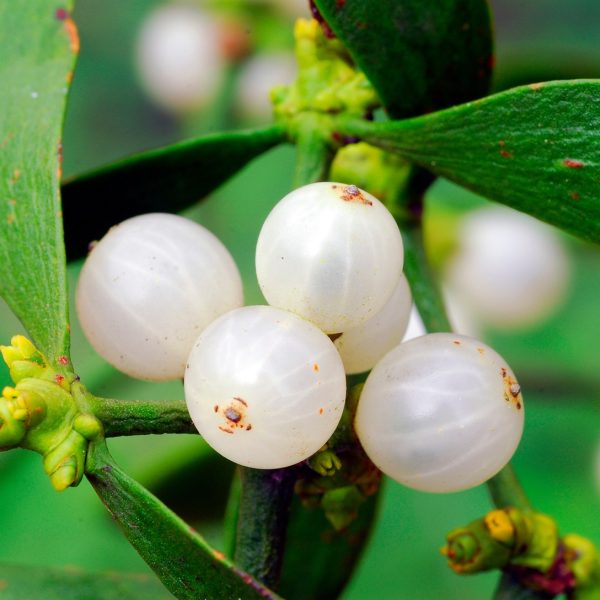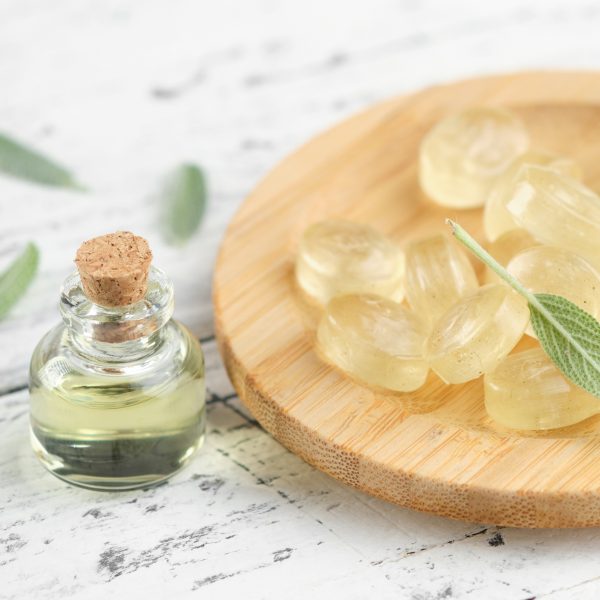Breastfeeding can present many challenges, including sore and cracked nipples, insufficient milk, engorgement and mastitis. This article shares herbal and holistic solutions.
Understanding breastfeeding

For some women breastfeeding may come easily and feel satisfying. For others it may be stressful, difficult and uncomfortable. It is a skill that can take significant patience and effort to establish and can easily be abandoned with a switch to formula and bottle feeds.
Breast milk is generally regarded as the ideal food for babies. As well as providing the correct balance of nutrients, it contains antibodies from the mother that can help protect against common infections. Breast-fed babies are less likely to be hospitalised with diarrhoea and vomiting, and reports suggest that it can also lower the likelihood of obesity and cardiovascular disease in later life (1).
There are benefits for the mother, too. Apart from encouraging bonding, it can help speed up the process of shrinking the womb back to its pre-pregnancy size (uterine involution), help the mother regain her pre-pregnancy weight and reduce the risk of ovarian and breast cancer in later life (2).
Starting breastfeeding needs support from healthcare professionals so that the mother knows how to position her baby so that it latches onto her breast easily and successfully, so that the process becomes comfortable and enjoyable for both of them. The La Leche League (3), also offers help, via a network of local groups, as well as online by social media or telephone, to help women with breastfeeding difficulties.
In the first weeks of life, breast-fed newborns need to feed eight to 12 times in every 24 hours. For mothers of premature babies expressing milk will ensure a continuing supply once the baby is home, while regular feeds also encourage further lactation. Hospital staff that claim a woman is producing insufficient milk and insist on formula top-ups can severely damage a new mother’s confidence in her ability to feed her baby successfully once she is home.
It is generally recommended to continue breastfeeding for six months even when supplemented with additional solids.
Effective breastfeeding

The ability to produce milk (lactation) starts in mid-pregnancy as the breasts begin to enlarge ready to secrete milk. The hormone prolactin is primarily responsible for milk production (lactation), stimulating the mammary glands to produce milk. Levels of the hormone increase during pregnancy and when, after the birth, levels of the hormone progesterone fall, prolactin and the suckling stimulus trigger actual milk production. Once lactation starts, as long as suckling continues milk will be produced.
The first secretion produced is called colostrum and contains more minerals, proteins, and vitamins A and K than later milk. It also contains antibodies, which specifically help to protect the mucous membranes lining the baby’s throat, lungs and digestive tract from infections, and also various growth factors that help with physiological development. Within a few days a high-protein milk begins to be produced instead in much larger quantities than the colostrum. This levels off after about day nine with a regular volume maintained by regular feeds.
Why things go wrong
Often the main problem is actually getting started; finding a comfortable, relaxed position for holding the baby and latching on successfully. An adequate milk supply with the breasts drained of milk at each feed requires the mother to have good nutrition and enough energy to cope with a newborn.
What she eats not only impacts the quantity of milk she can produce, but also its taste. Spicy and pungent foods — such as chili and garlic — do give a flavour to breast milk; this might help the child be more willing to enjoy these tastes in later life. However, if they suddenly object to taking milk they had previously enjoyed, it is always worth checking on any recent food eaten by the mother that they might be objecting to. Other common issues with breastfeeding are covered in the next section.
Common issues with breastfeeding

Insufficient milk
Insufficient milk can be related to inadequate nutrition, lack of rest or stress; although, some women are just naturally short of milk and find breastfeeding a problem in successive pregnancies. Large babies can also prove very demanding and it may be necessary to supplement feeds from an early age. Advice changes but a few years ago it was certainly common for health visitors to recommend solids for larger babies from six weeks. Typical signs of insufficient milk can include a baby that has delayed bowel movements, decreased urination, weight loss and lethargy. Good maternal nutrition is vital — women need an additional 500 calories a-day when breastfeeding.
Engorgement
Engorgement is commonest in the first five days after the birth. The milk may “come in” suddenly in a rush, and be far in excess of baby’s needs. Breasts that are over-full can feel hard, tight and painful. “Little and often” is generally the solution – increasing the frequency of the baby’s feeds will generally help to keep the problem under control. Help can be needed to ensure that the baby is well-attached — which can be difficult if the nipple is overstretched and painful — midwives or health visitors can offer assistance. A little excess milk can also be expressed by hand. A warm compress will help encourage milk flow when expressing the surplus.
Mastitis
Mastitis is an inflammation of the breast tissue. It can be very painful with lumpy tender breasts, hard or swollen areas, possibly a discharge from the nipple and the risk of feverish symptoms, which may need antibiotic treatment. The cause is often a blocked milk duct. Symptoms generally ease within 12–24 hours but seek medical help if they persist. In some cases an accumulation of milk in the breast can lead to bacterial infection and in severe acute cases an abscess may form which may need surgical incision to drain pus. Herbs that can help are included in the next section.
Blocked ducts
Blocked ducts are associated with insufficient drainage possibly due to excess milk, poor latching by the baby, feeding from one breast more often than the other, long periods between feeds or milk being left in the breast after a short feed. The baby may reject the breast as the milk flow is restricted and the breast becomes engorged or results in mastitis. If the breast is not drained of milk by the end of a feed, expressing any surplus may help prevent a blockage developing.
Sore nipples
Sore nipples are commonplace and generally caused by poor positioning of the baby, although they may also be due to sensitivity to the baby’s sucking. Sore nipples are the commonest reason for giving up breast feeding.
Cracked nipples
Cracked nipples, often related to candida infection (thrush) can also be a problem — especially if the baby is affected as well (usually signified by a white patches, on gums or the tongue that do not easily wipe off). It can become a persistent problem unless the infection is completely cleared. Typical symptoms include pain in both breasts, which is worse after feeds.
Herbs for healthy breastfeeding
Herbs to encourage milk production
Many herbs have traditionally been used to encourage milk production (known as galactagogues). The list includes

- Aniseed (Pimpinella anisum)
- Basil (Ocimum basilicum)
- Caraway (Carum carvi)
- Centaury (Centaurium erythraea)
- Cumin (Cuminum cyminum)
- Fennel (Foeniculum vulgare)
- Fenugreek (Trigonella foenum-graecum)
- Goat’s rue (Galega officinalis)
- Milk thistle (Silybum marianum)
- Nettle (Urtica dioica)
- Raspberry leaf (Rubus idaeus)
- Vervain (Verbena officinalis)
Several of these are common culinary herbs so using them in cooking is often the easiest way of adding them to your diet. Some, such as fennel, vervain and nettle, are readily available in commercial tea bags. Vervain and basil also have antidepressant qualities, so can be good choices if the stress of breastfeeding is affecting mood.
Alternatively a teaspoon of the dried herb to a cup of boiling water, infused for up to 10 minutes and taken two or three times a day is the usual recommendation. Not all have been extensively studied in clinical trials although one that focussed on fenugreek and milk thistle found that both had a significant impact on milk production (4,5). However, the study also noted that milk thistle can have a laxative effect and in some cases cause an allergic reaction (5).
Some of the hormonal herbs — notably agnus castus (Vitex agnus-castus) — will also help to stimulate milk production; Use tinctures and take 10 drops in water each day. Agnus castus will stimulate production of prolactin.
Herbs for mastitis
Prompt treatment for mastitis is important and the traditional remedy was simply to put a lightly crushed cabbage leaf — or soften the leaf slightly in your hands — between breast and bra and replace every four hours; if it is a large leaf, remove the rib. Cabbage is anti-inflammatory and there is plenty of anecdotal evidence to confirm its efficacy. Cabbage leaves can also help with engorgement.
Other effective external treatments for mastitis include poultices of chamomile (Chamomilla recutita), fresh broad plantain (Plantago major) or powdered marshmallow root (Althaea officinalis) — which can also be macerated in cold water overnight and the liquid used to soak a compress.
Compresses soaked in chamomile infusion can also help or use a cloth soaked in hot water to which 2–3 drops of lavender, rose geranium or fennel oil have been added. If using essential oil ensure that the breast is wiped clean before feeding.

Treatment of fever
If there is any infection or signs of fever then echinacea (Echinacea purpurea) is valuable, either as tablets or as a tincture (up to 10ml every three or four hours); both are readily available commercially. If there is no relief within 12 hours, seeking professional help is advised.
Hot compresses of lavender (Lavandula officinalis) or chamomile are usually recommended for engorgement, especially when expressing the surplus milk; although if there is excess heat in the breast, a cold compresses or an ice pack of frozen infusion can be used instead. Excessive milk production can be eased by drinking a cup of sage (Salvia officinalis) infusion once a day. Opt for Greek sage (Salvia fruticosa) rather than the common broad-leaved variety, as it contains much less thujone, which can be toxic in high doses (6).
Herbs for sore or cracked nipples
At one time it was not unusual for new mothers to be sent home from hospital with a tube of marigold (Calendula officinalis) cream to use on sore nipples and it is still the most popular remedy. A marigold lotion or compress soaked in infusion or well-diluted tincture can ease discomfort during feeds with marigold cream or ointment applied to the nipple and areola (the pigmented area around the nipple) after the feed. This can be wiped away with the cloth soaked in marigold infusion before the next feed. Alternatives are chamomile or marshmallow used in very similar ways. Cracked nipples, often related to candidiasis, will also respond to marigold cream, owing to the herb’s antifungal properties.
Chamomile or marigold infusions used to soak a warm compress can also be helpful for blocked ducts (massage the breast gently towards the nipple).
And as well as drinking sage tea (one teaspoon of dried Greek sage to a cup of boiling water three times daily) to dry the milk at weaning, mothers in many tropical parts of the world where aloes grow have long used fresh aloe vera (Aloe vera) juice applied to the nipple to discourage the toddler from sucking. Cut a leaf from the plant and apply the sap directly.
Holistic solutions
Although it may seem impossible at times, reducing stress, staying relaxed and sleeping as much as possible are essential components in successful breastfeeding.

Sleep and relaxation
Relaxation is not easy with babies and other small children in the household demanding attention. Catching up on sleep while baby sleeps is one tactic worth trying. Drinking chamomile (Matricatia chamomilla) tea will help calm the mother, but it also affects her milk so the baby is calmed too and, hopefully, taken at night both enjoy some good sleep.
Tea and coffee are stimulating, and they will stimulate the baby too. So, while coffee may give an energy boost to an exhausted mother, it might have a similar affect on baby. Other herbal teas can help — vervain (Verbena officinalis), lemon balm (Melissa officinalis) and lavender (Lavandula officinalis) are all soothing and relaxing.
Diet
Breastfeeding women need a minimum of 500 extra calories a day in a diet that contains plenty of protein, unrefined carbohydrates, fruit and vegetables. Calcium is especially important; In the past it was not unusual for women on a poor diet to lose teeth during breastfeeding as their own calcium levels were leached in producing milk for their babies. Good sources of calcium include hard cheese, sardines, nuts, pulses, tofu, and hard water The recommended daily amount during breastfeeding is 1,250 mg — so, if the diet is poor, supplement with calcium citrate or amino acid-chelated calcium.
As well as calcium the diet needs to include increased supplies of other minerals — magnesium, phosphorus, zinc, copper and selenium — as well as vitamins and essential fatty acids. Most will come from a nourishing and well-balanced diet, but adding a teaspoon of cold-pressed walnut oil to salads or vegetables will help provide essential fatty acids or take a fish oil supplement — such as cod liver oil. Avoid multi-vitamin supplements that include more than 50 mg of vitamin B6 daily as it can suppress prolactin (the hormone responsible for milk production).

In northern latitudes, especially in winter when there is little sun, most people end up with low vitamin D levels so supplementation is advisable — especially between October and March. The usual recommended daily dose is 400 IU (10 µg) but some specialists suggest significantly more — especially if the baby’s vitamin D levels are low. The Academy of Breastfeeding Medicine recommends that breastfed babies should receive vitamin D supplementation for a year, starting soon after birth at doses of (400–800 IU per day) (7).Currently the safe upper limit for daily vitamin D is 4,000 IU daily but research shows that high dose maternal vitamin D supplementation (4,000–6,400 IU daily or a single monthly dosage of 150,000 IU) can enrich breastmilk sufficiently to give adequate vitamin D levels in babies (8).
Exhaustion
Incessant demands, sleepless nights and lack of energy are all too common for breastfeeding mothers. Invigorating herbal teas can help — especially tulsi (Ocimum tenuiflorum), mint (Mentha piperita), nettle (Urtica dioica) or ginger (Zingiber officinale). Oats are also helpful either in teas or as oatmeal porridge with honey as a breakfast to help combat exhaustion. The addition of a banana counters any potassium deficiency.
Ginseng (Panax ginseng) is sometimes recommended to provide an energy boost, but its long term use in lactation has not been studied — so it may be used for short periods only. Commercial tablets are readily available.
A relaxed breastfeeding session free of any external stresses and worries can provide a harassed mother with valuable space in a busy day to simply enjoy the experience of bonding with her baby. Whenever possible choose a quiet comfortable location away from noise and distractions focus on the moment.
References
- Shanshan et al. (2024) “Breastfeeding in infancy and cardiovascular disease in middle-aged and older adulthood: a prospective study of 0.36 million UK Biobank participants”, The Journal of Nutrition, Health and Aging 28 (10). https://doi.org/10.1016/j.jnha.2024.10034
- “Breast cancer and breastfeeding: collaborative reanalysis of individual data from 47 epidemiological studies in 30 countries, including 50 302 women with breast cancer and 96 973 women without the disease”, https://www.thelancet.com/journals/lancet/article/PIIS0140-6736(02)09454-0/abstract; , et al. (2015) “Breastfeeding and cancer”, Cancer Epidemiology, 39 (1). https://doi.org/10.1016/j.canep.2014.12.007
- https://laleche.org.uk/
- Bazzano et al. (2016) “A Review of Herbal and Pharmaceutical Galactagogues for Breast-Feeding”, Ochsner Journal 16:511–524. https://pmc.ncbi.nlm.nih.gov/articles/PMC5158159/
- Ryan et al. (2023) “Use of Galactagogues to Increase Milk Production Among Breastfeeding Mothers in the United States: A Descriptive Study”. Journal of the Academy of Nutrition and Dietetics, September 2023, Volume 123 Number 9, 1329-1339.
- Länger R, Mechtler C, Jurenitsch J. Composition of the essential oils of commercial samples of Salvia officinalis L. and S. fruticosa Miller: a comparison of oils obtained by extraction and steam distillation. Phytochem Anal. 1996;7(6):289-293. https://doi.org/10.1002/(SICI)1099-1565(199611)7:6%3C289::AID-PCA318%3E3.0.CO;2-7
- La Leche League: https://llli.org/breastfeeding-info/vitamin-d
- Oberhelman et al. (2013) Mayo Clin Proc. December ; 88(12): 1378–1387. https://doi.org/10.1016/j.mayocp.2013.09.012


